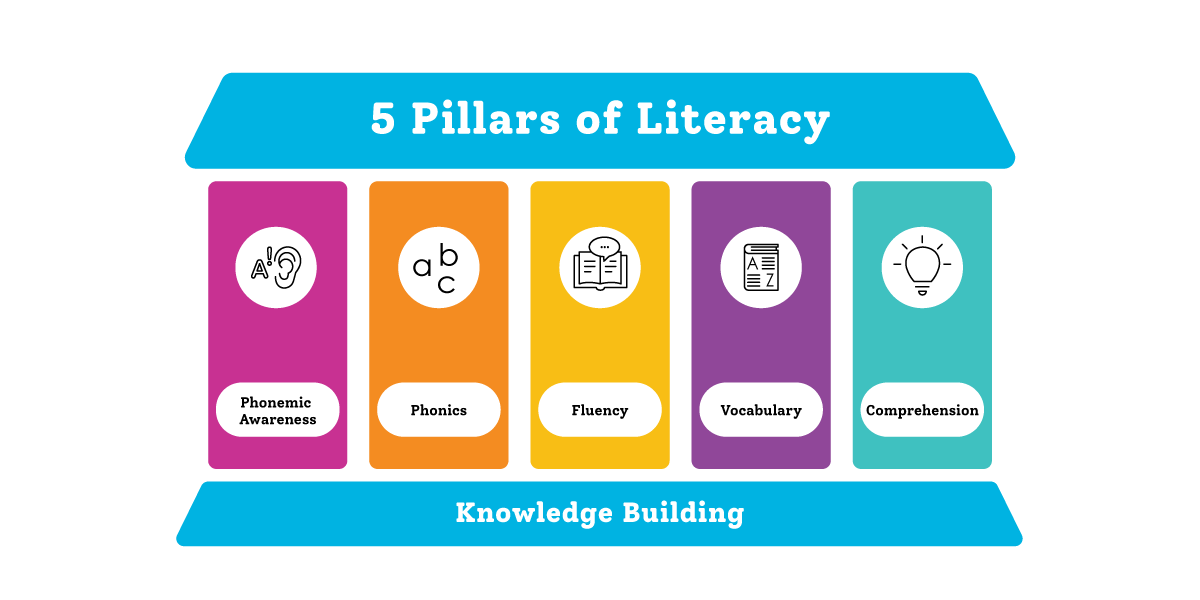
Learning A-Z is the perfect companion to support your transition from a balanced literacy approach to a science of reading-aligned approach.
What is Balanced Literacy?
During the first two decades of the 21st century, many educators searched for ways to simplify the complexity of teaching reading, often resulting in a focus on the act of reading itself rather than the many skills that must be acquired to read independently. This practice is known as balanced literacy. Using this approach, teachers engage their students with different types of reading each day to strengthen literacy development. This approach, however, leaves much to be desired when it comes to strengthening key foundational skills. To address this, many classrooms have transitioned away from balanced literacy to a more comprehensive, research-based approach- structured literacy.

What Is the Difference Between Balanced Literacy and Structured Literacy?
Balanced literacy varies from classroom to classroom, but the thinking behind it is to provide varied exposure to text through multiple means. Some phonics instruction is included, but it is often loose and not reliant on a structured scope and sequence. Classrooms that utilize balanced literacy often include whole-class and small-group experiences with text, including guided reading in small groups. However, some of the practices associated with balanced literacy have not been proven to improve reading outcomes.
On the contrary, classrooms that use structured literacy are based on a Science of Reading-aligned approach that relies on evidence-based best practices to inform literacy instruction. The goal of any evidenced-based literacy program is for educators, curriculum developers, and districts to use routines, instruction, and strategies that are built around empirical, scientifically-based research studies when designing curriculum and instructional strategies. When this type of instruction is delivered explicitly and systematically, it leads to the ability to decode words, which is a key part of any Science of Reading-aligned approach. This “bottom-up” instructional strategy is not at the forefront of balanced literacy.
The good news is that most balanced literacy classrooms have found making the shift to structured literacy much less daunting than anticipated. The chart below lists common instructional practices and demonstrates how applying a Science of Reading lens can lead to research-based improvements.
- Offers an interactive experience that includes student engagement in the text via dialogic conversation.
- Builds language comprehension and decoding.
- Used to deepen comprehension, build background knowledge, model strategies, and build vocabulary.
Varying Approaches | Balanced Literacy | Science of Reading |
|---|---|---|
| Research-based support | Research supports some of these practices but requires pedagogical shifts to become effective. | Research has been proven to support these literacy practices. |
| Read aloud |
|
|
| Shared reading |
|
|
| Independent reading |
|
|
| Foundational skills (phonemic awareness and phonics) |
|
|
| Knowledge building |
|
|
What Research-Based Strategies Are Present and Missing in Balanced Literacy Classrooms?
How Can Using Raz-Plus Help You Shift from Balanced Literacy to Structured Literacy?
Raz-Plus, our award-winning product that offers high-quality, Science of Reading-aligned resources, teaching materials, and an engaging student portal, seamlessly supports the transition to structured literacy by addressing the following foundational skills:
Phonological Awareness and Phonics
- Help students recognize the sounds of language with phonological awareness resources that focus on word awareness, onset and rime awareness, rhyme awareness, syllable awareness, and phonemic awareness.
- Commit time to teaching phonics using deliberately sequenced phonics instruction and practice with decodable books.
- Teach students phonics-based scaffolds for reading unfamiliar words rather than relying on a three-cueing system or guessing.
Fluency https://www.raz-plus.com/fluency/
- Motivate students and help them build oral fluency skills, including accuracy and expression, with engaging practice passages and Reader’s Theater Scripts to read aloud. Fluent readers read more quickly and smoothly, allowing them to focus on comprehension.
Vocabulary and Comprehension
- Develop oral language comprehension, reading comprehension, and vocabulary through structured read-alouds, reading books and passages or text sets, and close reading packs and passages around a specific topic or theme.
- Develop instructional routines that create opportunities for intentional and incidental academic conversations. For example, use the discussion cards attached to each book’s lesson plan to promote conversation.
- Strengthen vocabulary across content areas and in conversations using Raz-Plus books that are based on research.
- Build knowledge, vocabulary, and comprehension skills simultaneously by curating text sets, for example, that combine social studies and other subjects. Leverage content area topics and literacy instruction to build knowledge.
Explore Balanced Literacy With Learning A-Z!
Dive into the wide range of solutions designed with both the student and teacher in mind.


